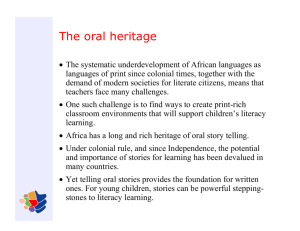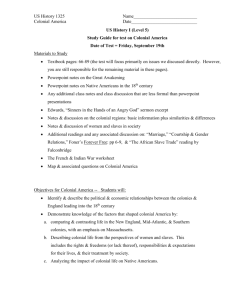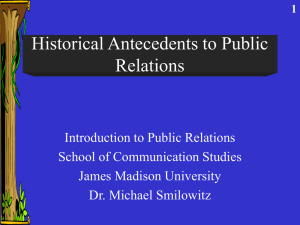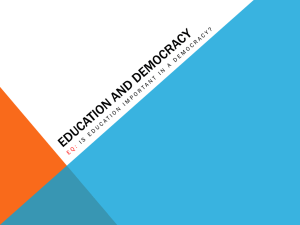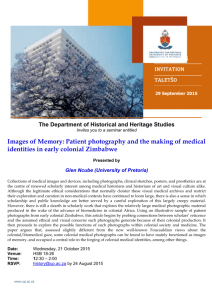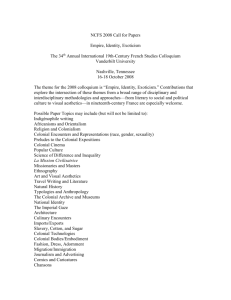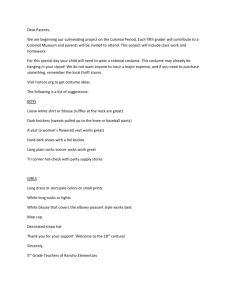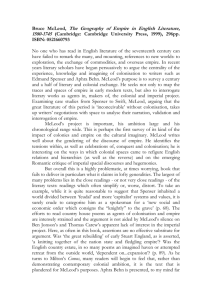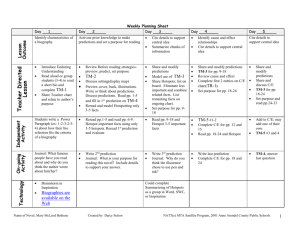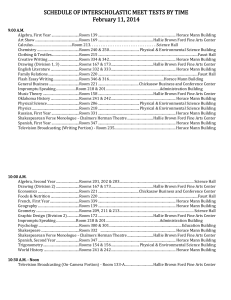EDU109/Fall2007/DeGiorgio Chapter 4
advertisement
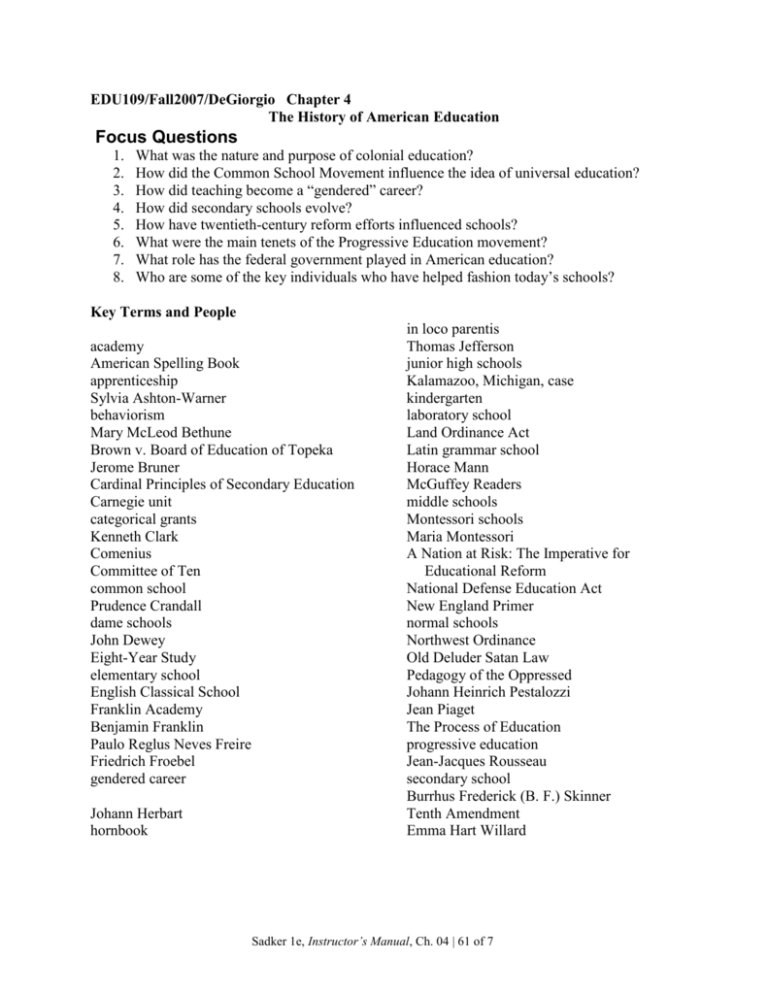
EDU109/Fall2007/DeGiorgio Chapter 4 The History of American Education Focus Questions 1. 2. 3. 4. 5. 6. 7. 8. What was the nature and purpose of colonial education? How did the Common School Movement influence the idea of universal education? How did teaching become a “gendered” career? How did secondary schools evolve? How have twentieth-century reform efforts influenced schools? What were the main tenets of the Progressive Education movement? What role has the federal government played in American education? Who are some of the key individuals who have helped fashion today’s schools? Key Terms and People academy American Spelling Book apprenticeship Sylvia Ashton-Warner behaviorism Mary McLeod Bethune Brown v. Board of Education of Topeka Jerome Bruner Cardinal Principles of Secondary Education Carnegie unit categorical grants Kenneth Clark Comenius Committee of Ten common school Prudence Crandall dame schools John Dewey Eight-Year Study elementary school English Classical School Franklin Academy Benjamin Franklin Paulo Reglus Neves Freire Friedrich Froebel gendered career Johann Herbart hornbook in loco parentis Thomas Jefferson junior high schools Kalamazoo, Michigan, case kindergarten laboratory school Land Ordinance Act Latin grammar school Horace Mann McGuffey Readers middle schools Montessori schools Maria Montessori A Nation at Risk: The Imperative for Educational Reform National Defense Education Act New England Primer normal schools Northwest Ordinance Old Deluder Satan Law Pedagogy of the Oppressed Johann Heinrich Pestalozzi Jean Piaget The Process of Education progressive education Jean-Jacques Rousseau secondary school Burrhus Frederick (B. F.) Skinner Tenth Amendment Emma Hart Willard Sadker 1e, Instructor’s Manual, Ch. 04 | 61 of 7 This chapter traces American education from colonial times to the present. Education during the colonial period intended to further religious goals offered primarily to White males, typically wealthy White males. For females and children of color, education was difficult to attain, and even when available, the education was often inferior. Over time, educational exclusivity diminished even today, wealth, race, ethnicity, and gender continue to impact educational quality. he struggle to have America honor its commitment to equality The complex network of expectations surrounding today’s schools is the product of a society that has been evolving for over three centuries. Individuals, groups, and the government all contributed to making public schools more accessible. Benjamin Franklin, Horace Mann, Emma Hart Willard, and Mary McLeod Bethune fought to free America from historical biases. New federal laws were designed to create more equitable and effective educational opportunities. In the colonial era, The goals were simple: to teach the Scriptures and to develop a religious community. We begin by looking into the classroom of Christopher Lamb, a New England teacher in one of the earliest American schools, more than three centuries ago. Topical Chapter Outline Christopher Lamb's Colonial Classroom Colonial New England Education: God's Classrooms Dame schools Apprenticeship In loco parentis Old deluder Satan law Latin grammar school A New Nation Shapes Education Thomas Jefferson Benjamin Franklin Academy The Common School Movement Common school Elementary school Horace Mann Normal schools Spinsters, Bachelors, and Gender Barriers in Teaching Gendered career The Secondary School Movement Secondary school English classical school Kalamazoo Michigan case Junior high school Middle school School Reform Efforts National Education Association (NEA) Committee of ten Cardinal principles of secondary education A Nation at Risk: the Imperative for educational reform John Dewey and Progressive Education Laboratory school Progressive school Eight year study The Federal Government National Defense Education Act (NDEA) Tenth Amendment Land Ordinance Act 1785 Northwest Ordinance 1787 Categorical grants Brown vs. Board of Education of Topeka 1954 The World We Created at Hamilton High: A Schoolography A Super School (If you’re on the Right Side of the Tracks), 1953–1965 Social Unrest Comes to School, 1966–1971 The Students' Turn, 1972–1979 New Students, Old School, 1980–1985 Hall of Fame: Profiles in Education Comenius Jean-Jacques Rousseau Johann Heinrich Pestalozzi Friedrich Froebel Johann Herbart Emma Hart Willard Horace Mann Prudence Crandall Maria Montessori John Dewey Mary McLeod Bethune Jean Piaget B.F. Skinner Sylvia Ashton Warner Kenneth Clark Jerome Bruner Paulo Reglus Neves Friere

